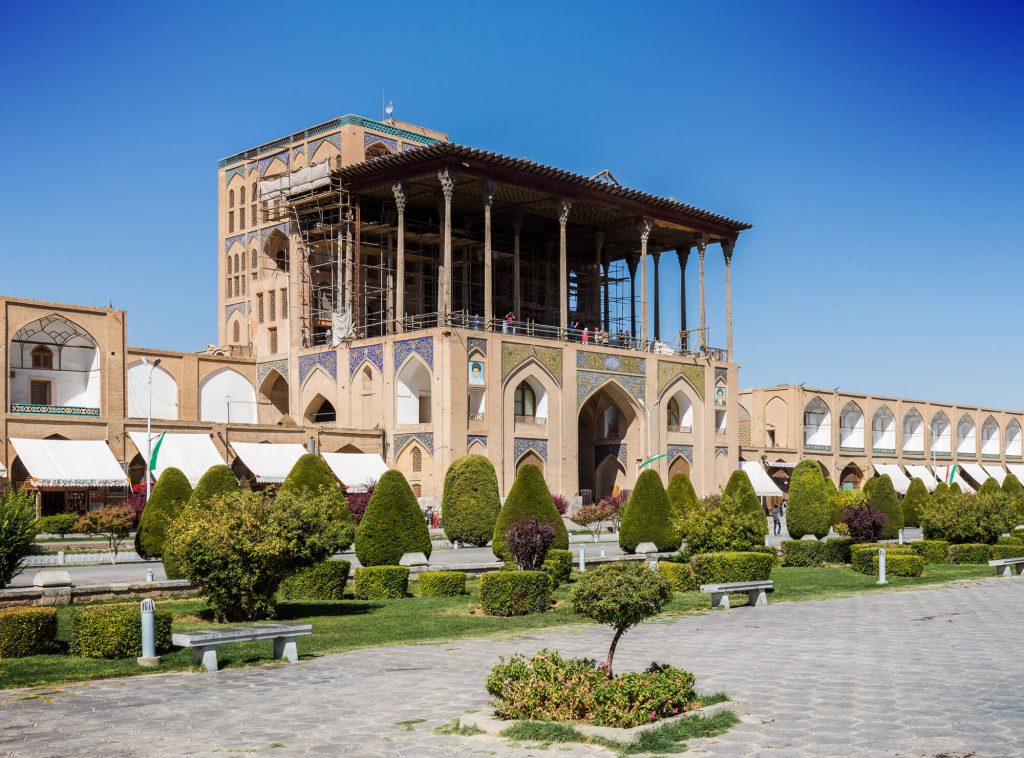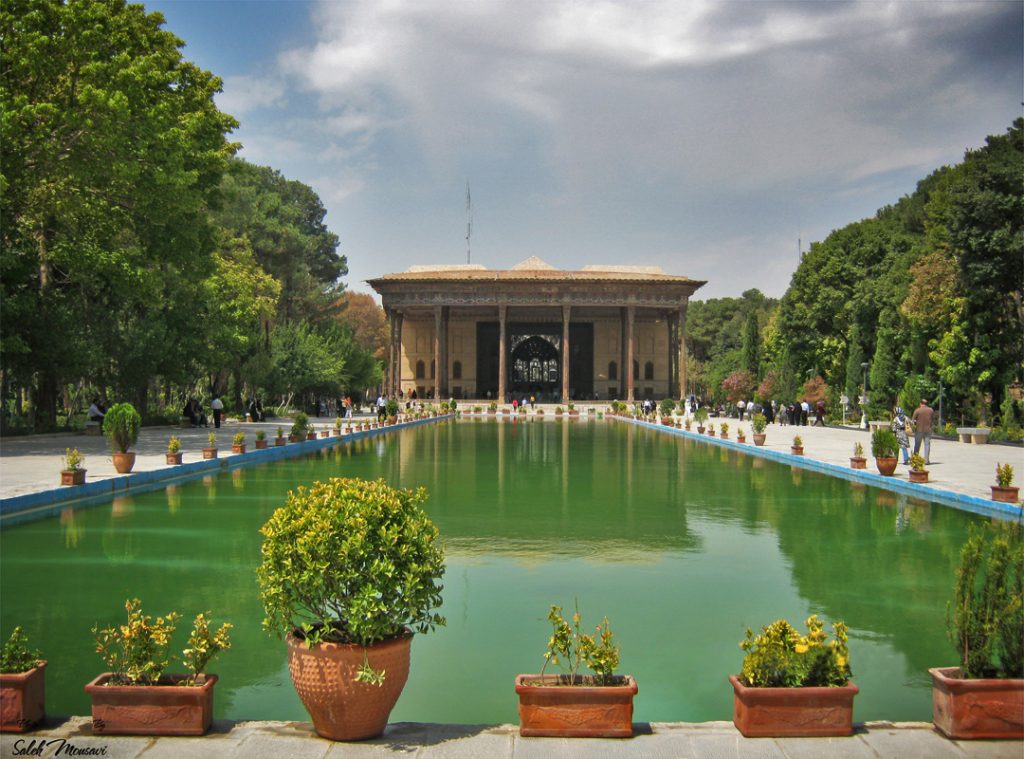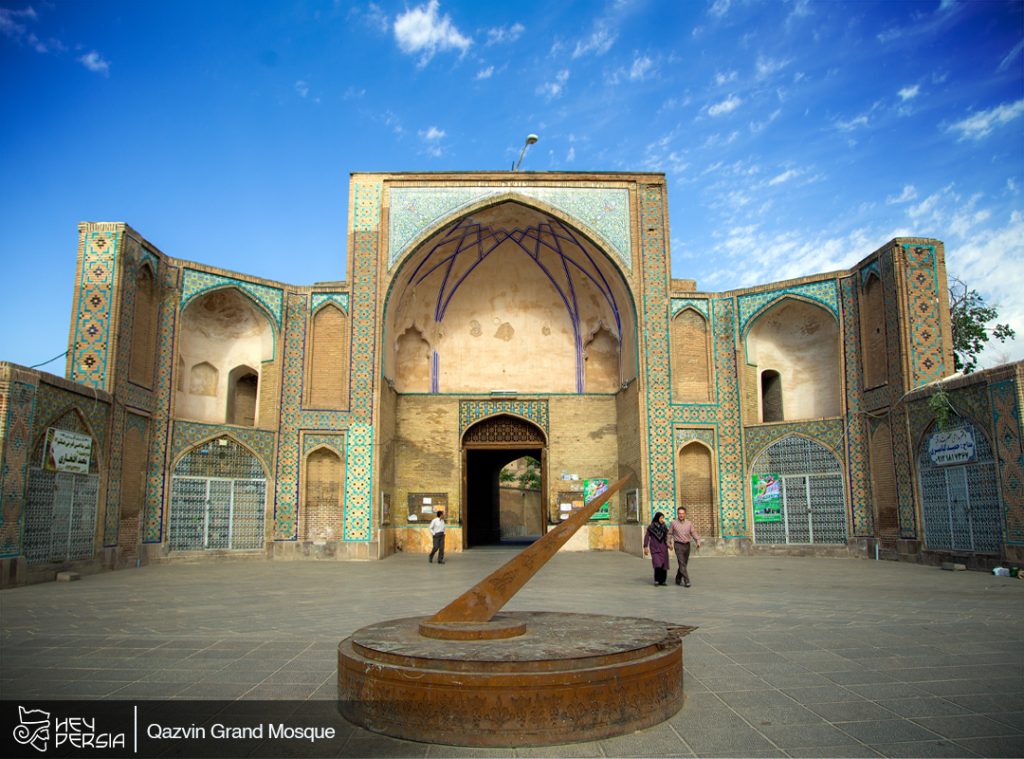Fin Garden of Kashan in Iran is one of the most beautiful original gardens of the country, which was as one of the 9 Iranian gardens in UNESCO in 2013. This garden, with an area of 23 thousand square meters, was one of the most visited places in Isfahan province in Nowruz 2018 and 2018. This time, we at Hey Persia blog, have decided to talk to you about the history of Fin Garden, its name, the architect of the garden and its different parts. If you are also curious to learn more about one of the most abundant Iranian gardens, stay with us in the rest of the article.
The history of Fin Kashan garden
The Fin Garden area has been the focus of the rulers of the time since the distant past because of the spring that flowed in it. If we want to mention its age, there are many stories and hadiths. In fact, the life of the garden is not known. Some sources attribute Fin Kashan garden to the time of “Ardeshir Babakan”. But in written form, it is said that Fin Garden was during the time of “Yaqub Leith Safari”, although another group attributed the construction of the old Fin Garden to Al Boyeh era and some others to the Ilkhani era.
The history of Fin Garden of Kashan in Iran in different eras
Iranian garden of Fin Kashan was one of the popular gardens in different government eras, in this part we will mention some significant and influential periods in the garden:
The condition of Fin Kashan garden during the Safavid period
During the Safavid Shah Tahmasab period, a very strong earthquake occurred in the Fin region and almost destroyed the “Old Fin Garden”. During the time of Shah Abbas I, the garden was “Fin Nou Garden” was near the previous area, along with high round towers, a field for playing polo, etc. Even Shah Abbas I, in order to prevent the risk of flooding in the future, built a stone dam one kilometer south of the garden to protect it. Renovation and development of Fin Kashan garden continued after Shah Abbas I until Shah Safi and Shah Abbas II. In such a way that the “Safawi camel throat building” was of wood and iron at that time, so that the kings could go to the roof, hold a party and enjoy the atmosphere around them.

Historical monuments of the Safavid era
Among the other developments of the Safavid era are the construction of the entrance gate, the Amir Kabir bath, the Safavid Kush, and the paving stones of the garden with a sun pattern.
The state of Fin Garden of Kashan in Iran in the Zandiyeh period
After the Safavid period, Fin Kashan garden was not much attention and this garden was 23 thousand square meters away from its peak period. Until the death of Karim Khan, he ordered the governor of Kashan to revive, restore and rebuild the garden. During the renovations, a new building was also to the garden, which was called “Kholot Karimkhani”.
The state of Fin Garden of Kashan in Iran in the Qajar period
Every time we hear the name of the Qajar dynasty, we automatically remember the ruins and shameful contracts of that dynasty. But contrary to their shameful history, the condition of Fin Garden of Kashan in Iran was good during the Qajar period. The Badgir mansion or the current library was built in this period, the small and large bath in Bagh Fin was also renovated in this period and seven-color and turquoise tiles were added to it.
Fin Kashan garden during the Pahlavi era and the Islamic Republic
Among the most important measures that were carried out during the Pahlavi era was its national registration in 1314. During this period, the central pool of the garden was renovated and the construction of the Kashan Museum was started on the ruins of Nizam al-Dawlah in 1336. Many parts of Fin Garden were restored in 1357 and the present library was also built there. With the victory of the revolution, unfortunately, in the period of 30 years from 1357 to 1387, nothing was done to improve and restore the garden buildings. Until 2007, the floor of the garden, the internal streams, the outlet water of the ponds, the Sardar mansion and the hut were restored.
The most important architectural elements of Fin Kashan Garden
Water and trees are the most important dynamic elements, and its historical buildings are the most basic fixed elements of Fin Garden architecture. In garden design, water is one of the most basic elements. Water is used stagnant in the pool and pond of the house, flowing in the streams, erupting in the fountains and boiling in the bottom of the bubbling pond of Bagh Fin Kashan. In Fin Kashan garden, there are 579 cypress trees and 11 plantain trees. Most of the trees in the Fin Garden of Kashan in Iranare between 100 and 470 years old.
The oldest trees in the garden are Lily and Majnoon cypress, which are about 500 years old and are located next to the Qajar hut. The passageways of the garden also play a very important role in its architecture. The longitudinal axis of the garden is in the northeast-southwest direction. The east-west passage is one of the important and main passages of the garden, which ends at the Kashan National Museum on one side and Amir Kabir Library on the other. The north-south passage also starts from Sardar mansion. Sub-passages also start from the ostrich mansion in the southern part and end at one of the sub-entrances of the garden in the northern side.

How does the bubbling pool of Fin Garden of Kashan in Iran work?
One of the most beautiful and amazing actions done in Fin Kashan Garden is the design of its bubbling pool with 160 holes. Each of the holes is a symbol of the flowers of Kashan carpets. The way they work is that when the water comes out of the first hole as a fountain, the second hole acts as a suction. Having said that, the water of half of the holes is outward and the other half acts as a suction so that the water does not overflow from the pond. The boiling pool of Bagh Fin is one of the sights of Kashan, which will surprise every viewer.
The floor of the pond is with tiles in the form of Kashan carpet patterns. “Naib Hossein Kashi” led by a group of rebels, during the era of “Mohammed Ali Shah” removed the tiles of the pond and took them to a private garden to use them in a new pond. But since they did not have enough skill in installing tiles, they could not use them. Finally, except for a few tiles that were in transit, a large number of tiles were to the Louvre Museum in Paris.
Different parts of Fin Kashan garden
As we mentioned, over many years, many kings visited this garden and each of them built mansions in it. In this part, we will introduce different parts of Fin Kashan Garden:
The tower and ramparts of the garden
During the Safavid era, 4 towers were around the garden. In later periods, their number changed. During the Qajar era, 3 more towers were to the fence of the garden and Fin garden became a royal castle garden.
Safavid Kush
The Safavid Kushk was during the reign of Shah Abbas I. This two-story booth used for holding parties, celebrations, and the king’s baraam. Kolah Ferangi Mansion was also during Shah Safi era. But unfortunately nothing is of it today. Safavid Kushk is quadrangular and has a pond in its center. On its walls, there are still paintings by “Reza Mosvar Kashani” which have seriously damaged and faded due to the attack of Afghans, earthquake, etc.
The pool of twelve fountains in Fin Kashan Bagh
The pool of 12 fountains in Fin Kashan garden was in the period of Mohammad Shah Qajar and is another architectural wonder of the garden. The Twelve Fountains Pool is located after the Boiling Pool, and when water pours into it, it flows into the Twelve Holes Pool through clay pipes. In this way, the fountains are constantly boiling.
The king’s room in Bagh Fin Kashan
Another interesting place in Bagh Fin is the King’s Room. This room is also as “Panj Dari” and “Arsi”. On its sides, the crew rooms built, which are as “earring room”. The windows of the king’s room are all colored. Colored glass not only adds to the beauty and splendor of the building, but also protects the wood of the building from the attack of termites. In addition to colored glass that repels insects, channels also designed in the plinths of the building that cause air flow behind the main wall of the building.
Sardar Bagh Fin Kashan mansion
At the entrance of Fin Kashan Garden, there is a 2-story building known as Sardar Mansion. This building was in the Safavid period and has a hall that connects the outside and the inside of the garden. At the bottom of Sardar’s mansion, a vestibule seen where visitors wait to enter the garden.
Kashan National Museum
As mentioned, the National Museum of Kashan with an area of 300 square meters was in 1346 on the ruins of Nizam al-Dawlah. This one-story building consists of large and small halls and a basement and includes three different departments of anthropology, archeology and handicrafts.
Sulaymaniyah spring
In the previous parts, we mentioned that the important source of running water for the garden is the 7,000-year-old Sulaimaniye spring or Fin spring. One of the important points that is one of the characteristics of Sulaimaniyeh spring is the constant water temperature of about 25 degrees Celsius. In such a way that it looks cool in the hot seasons of the year and warm in the cold seasons of the year. In addition, the amount of water in Sulaimaniye spring does not depend on the annual rainfall.
Qajar Kush
Qajar Kush is another part of Bagh Fin Kashan, which was during the reign of Fath Ali Shah in 1189 AH and is also as “Fath Ali Shah’s sofa” or “Fath Ali Shah’s throat camel”. The Qajar hut includes a four-arched vault with a boiling water tank, a water tank, and a four-evan and king’s seat. There are two backyards in the north and south of the building, which lead to several rooms.
The ceiling of the Qajar hut was by the famous painter Sani al-Molk Ghafari. On top of the Qajar pond, there are also paintings of Shahaneh Goose, Shikargah, Quranic stories and the events of Bagh Fin. More interestingly, in one picture, all 18 sons of Fath Ali Shah are all around the Qajar hut.
Women’s fountain
Cheshme Khana, which is also as Chai Khana today, is located next to the Qajar hut. The incoming water of Bagh Fin in the female spring is into 3 parts and flows into the Joshan pond, the Safavi pond and the Qajar pond.
Karimkhani’s backyard
Karim Khani’s backyard was in the southern part of the garden during the Zandiyeh period. This part of the garden includes five door rooms, simple rooms and courtyard. There are also nesting rooms on both sides of the courtyard.
Fin Garden Royal Bath
Bagh Fin royal bath was by the order of Fath Ali Shah Qajar and was only for Qajar kings.
Safavid bath in Bagh Fin
The Safavid bathroom is actually the same small bathroom that the crew and ordinary people used. The great president of Iran, Amir Kabir, was in this bathroom.
Safavid bath
Most parts of the Safavid bathroom are similar to the Sultani bathroom, with the difference that there are 7 old 500-year-old tiles in the bathroom vault.
Amir Kabir Library
Fin Garden Library is actually a windy mansion located in the southeast of the garden and dates back to the Qajar period. This building has been used by the public as Amir Kabir’s library since 1334.
The most important events of Bagh Fin Kashan
Due to the high age of Fin Kashan garden and the interest of various kings in it, important historical events took place in this garden, which we will mention below:
The celebration of Shah Ismail Safavi
During his rule, “Shah Ismail Safavi” came to Fin Kashan Garden twice and held a celebration and dance there.
The murder of Khazar Nahavandi
“Khazar Nahavandi” was one of the most powerful rulers of Kashan city during the Safavid period. His authority and power worried Shah Abbas I. Therefore, in 986 AD, Khazar Nahavandi was stabbed to death in Bagh Fin by order of Shah Abbas I.
Death of Shah Safi
Shah Safi, the 6th Safavid king, loved Fin Garden very much and visited it a lot. He also spent the end of his life in the Dolatkhane Bagh mansion, and even his ten-year-old son was enthroned in this same garden after him.
Amir Kabir’s murder
Amir Kabir, the wise and great Prime Minister “Naseruddin Shah” was finally from the prime ministership and exiled to Kashan with the many conspiracies of “Mehd Alia” and “Haj Ali Khan Maraghei”. He killed by the bathhouse on December 20, 1230 in the small bathroom of Bagh Fin.
Shelter Naib Hossein Kashi
“Naib Hossein Kashi” along with his companions took refuge in Bagh as an outlaw during the reign of Muhammad Ali Shah and lived there for about 14 years. Finally, they arrested and executed in 1298 solar year.
What is the name of Finn’s garden?
This 23,000 square meter garden is in an area “Fin Kashan” and that is why it is Fin Kashan Garden. But if you have a question, what does the word fin mean? Some say that fin is an Arabic word and it is actually from the ancient Persian word pin meaning “end”. The end of Kashan city was in this area. But another group guesses that fin is from the word “fine” and Garden of Kashan in Iran was the name of a hat by the inhabitants of the city.
Fin Garden of Kashan in Iran
Fin Garden of Kashan in Iran is one of the most beautiful gardens in the country, located in the Fin region. The ratio of Fin to the city of Kashan is the same as the ratio of the Tajrish region to the city of Tehran. In the past, Fin promenade was full of various gardens, and in fact, it can considered the green gem of Kashan. If you have also visited Fin Garden and have more information about it, you can write them in the comments and suggestions section and share them with us. Thank you in advance for your cooperation.
Hey Persia tourism magazine has launched with the aim of getting to know more Iranians who are enthusiastic and interested in this land and water. If you also want to know more about our vast country, you can register on Hey Persia website and learn about the most important events and tourist places of our country.





